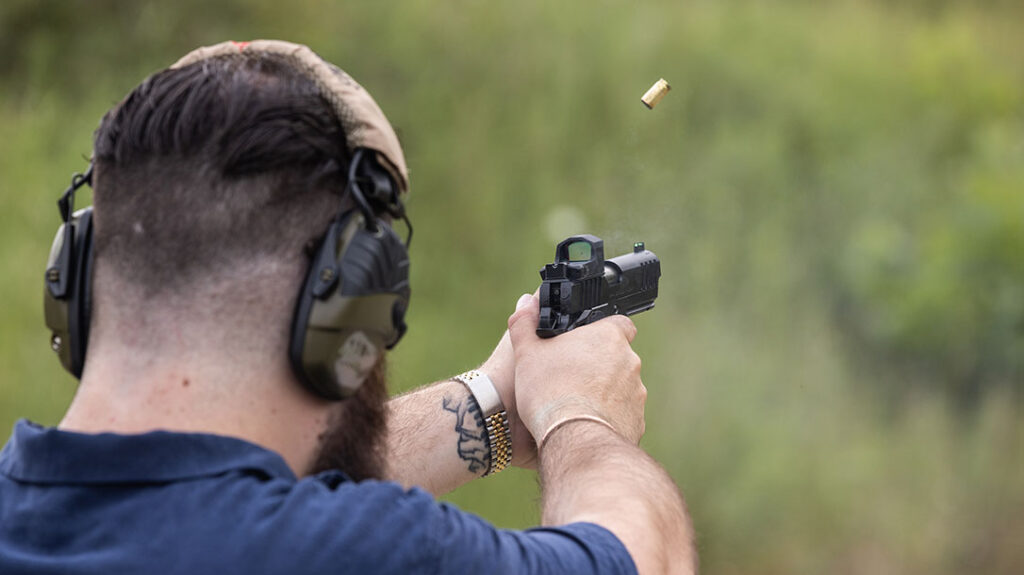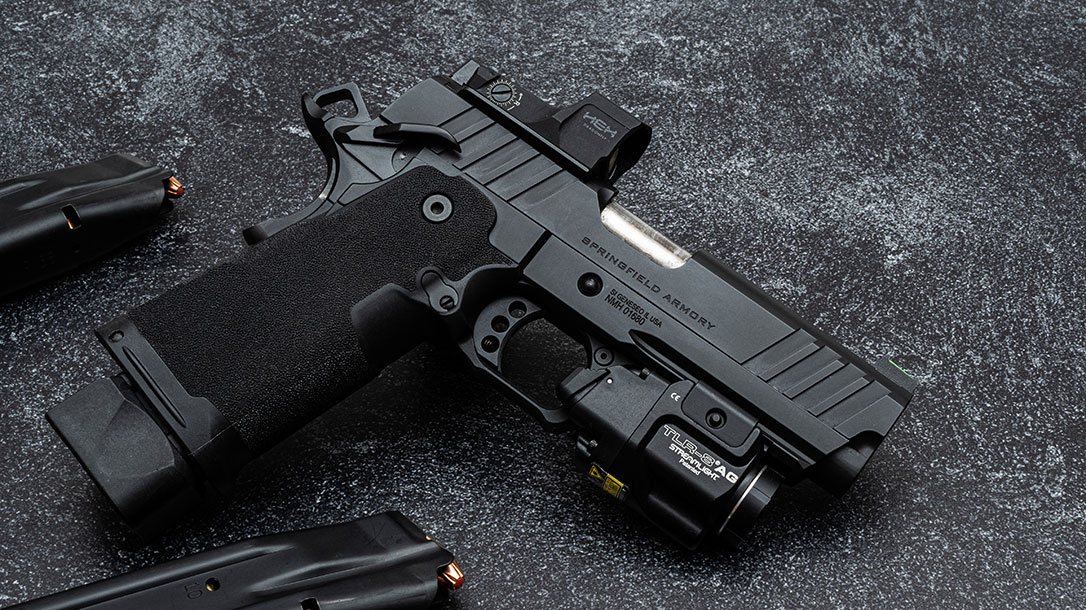Springfield Armory got its start producing more traditional and familiar firearms like its 1911s or M1As. However, the company has never been afraid to switch lanes and try something new. And during the past few years, the company has been making more moves than ever. And the Prodigy proves itself a shining example of the diversity of the company.
The Springfield Armory Prodigy
New models like the Saint AR-15, Waypoint bolt-action rifle, Hellcat and Hellcat Pro micro-compact pistols, and the new Hellion bullpup rifle all demonstrate Springfield’s commitment to providing a wide variety of different types of firearms to the American consumer. Well, hold on to your socks because it’s getting more interesting than ever.
Deciding to switch lanes once more from its traditional 1911 production line and travel down a parallel street for a bit, Springfield Armory has just introduced its own version of a 2011-style pistol.
Advertisement — Continue Reading Below
It’s not often that a company comes out with something that I didn’t know that I needed or wanted. But the new Springfield Armory Prodigy just might be a welcome exception to that rule.
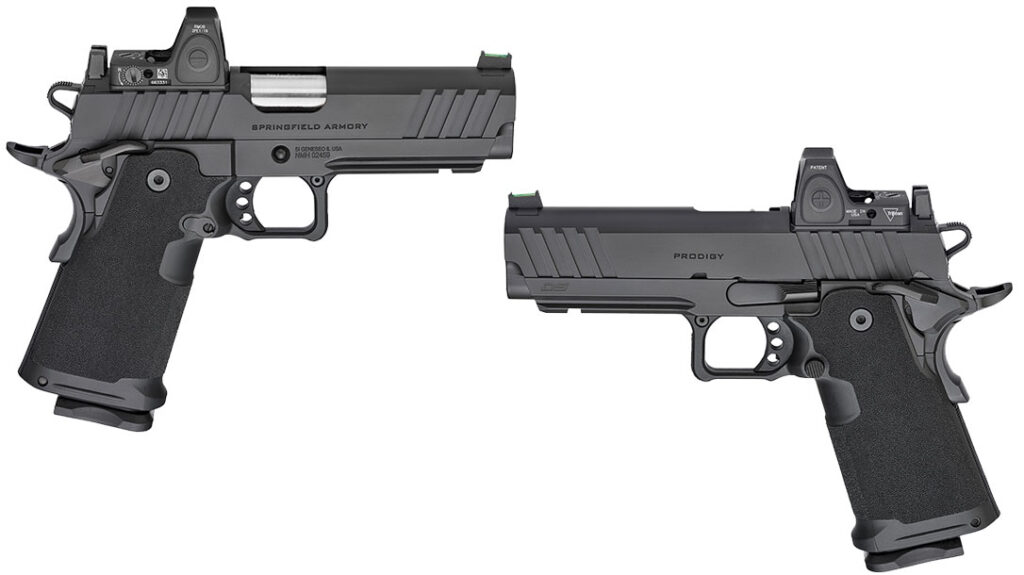
21st Century Fighter
It’s hard to explain. When I first pulled the new Prodigy out of its case, I got a little steampunk vibe from it. It could have been the merger of old- and new-world technologies into one form factor. Or the somewhat flat, angular lines throughout the frame and the slide.
Advertisement — Continue Reading Below
It could have also been the minimalist aesthetic in conjunction with details and controls that were a bit over-exaggerated. But in a good way. Whatever it was, to me, the Prodigy was one good-looking pistol with just a touch of eclectic flair.
As a rule, 1911s come with two major components consisting of the frame and the slide with grip slabs made of various materials that are attached to the frame.
As a 2011, the Prodigy utilizes a third major component. A double-stack, polymer grip frame that mates up with a steel subframe. This configuration allows the prodigy to achieve a native capacity of 17 rounds. However, magazines with even higher capacities are available as well.
Advertisement — Continue Reading Below
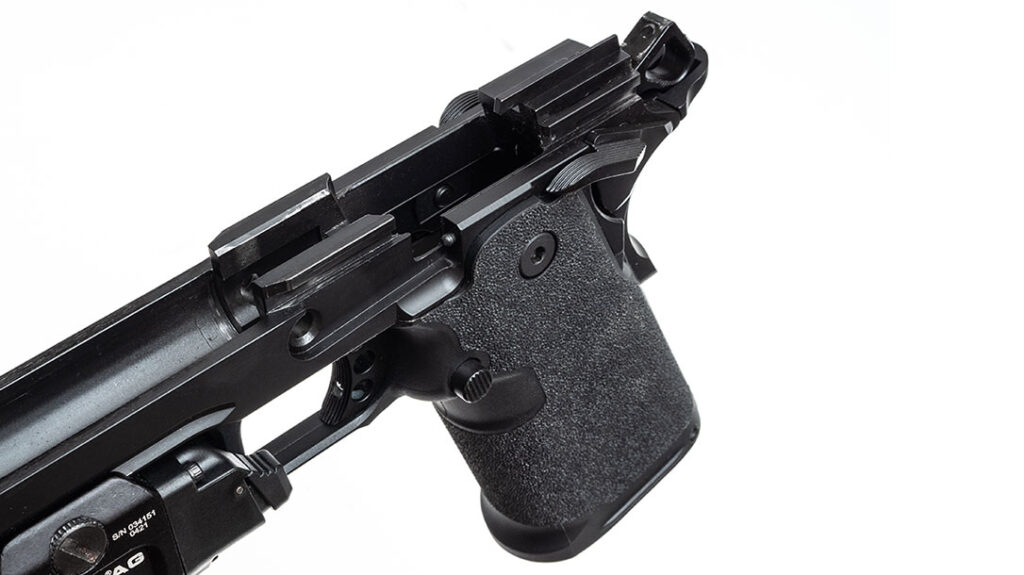
In fact, each Prodigy ships with one 17-round and one 20-round magazine. Additionally, Springfield also has a 26-round magazine, one of which they included in my review kit. The 26-round magazine should go on sale soon and will probably sell for around $50 to $55.
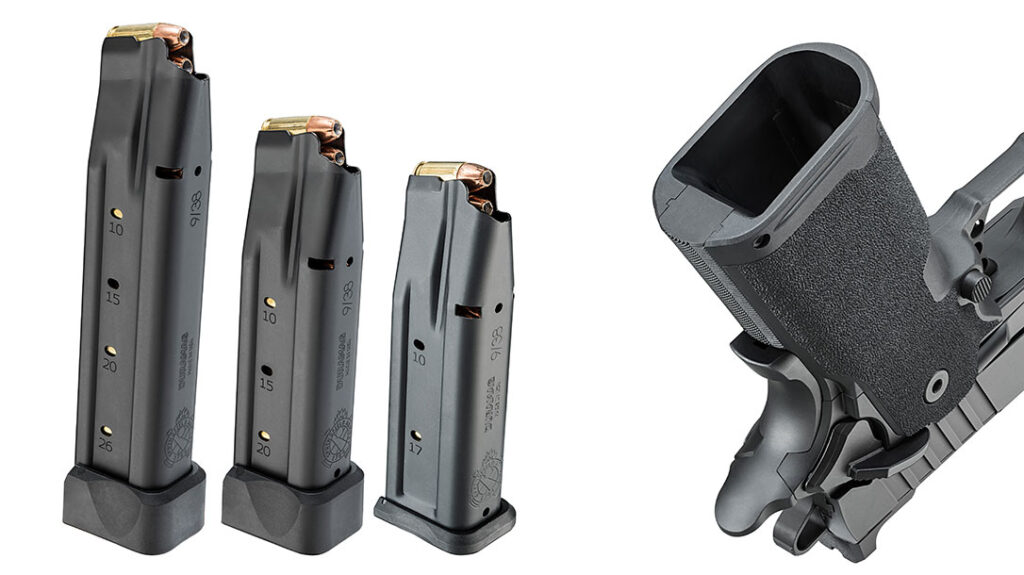
Advertisement — Continue Reading Below
Whether you’re running a Prodigy for competition or home defense, these are prodigious capacities. Specifically when compared to standard 9mm 1911s that offer just eight or nine-round magazines.
Two Versions of the Springfield Prodigy
With its introduction, the new Prodigy comes in two different flavors. One with a 5-inch, match-grade bull barrel and another with a 4.25-inch bull barrel. I received the 4.25-inch version for this review, and I have to say it’s an extremely well-balanced pistol and feels fantastic in the hand.
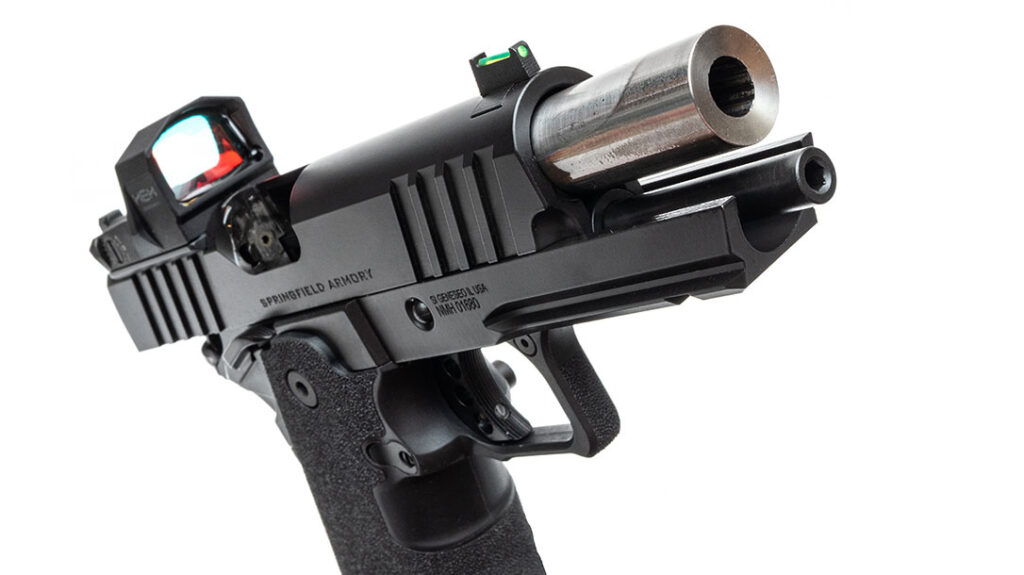
Advertisement — Continue Reading Below
Some would argue this model is set up more for daily carry. However, the grip is the same size as the larger version, and the grip is the hardest part to conceal. That said, I don’t miss the extra barrel length just because of the 4.25-inch model’s excellent balance in the hand.
With an overall length of 7.8 inches and a height of 5.5 inches, the 4.25-inch Prodigy is no weak sister when it comes to size. However, thanks to the polymer grip frame, there are substantial weight savings involved. The pistol tips the scales at only 32.5 ounces.
For comparison’s sake, Springfield’s 4.25-inch, single-stack 9mm Emissary weighs in at 40 ounces with its steel frame. The beauty of the Prodigy is that it’s a lighter package. But it takes advantage of a minimum of 18 rounds on tap with one in the pipe.
Advertisement — Continue Reading Below
Digging Deeper
But capacity and light weight aren’t the only things the Prodigy has going for it. In the manner of a latest-generation fighting pistol, the Prodigy includes an optics cut for the slide. It can be used with several adapter plates available from Springfield.
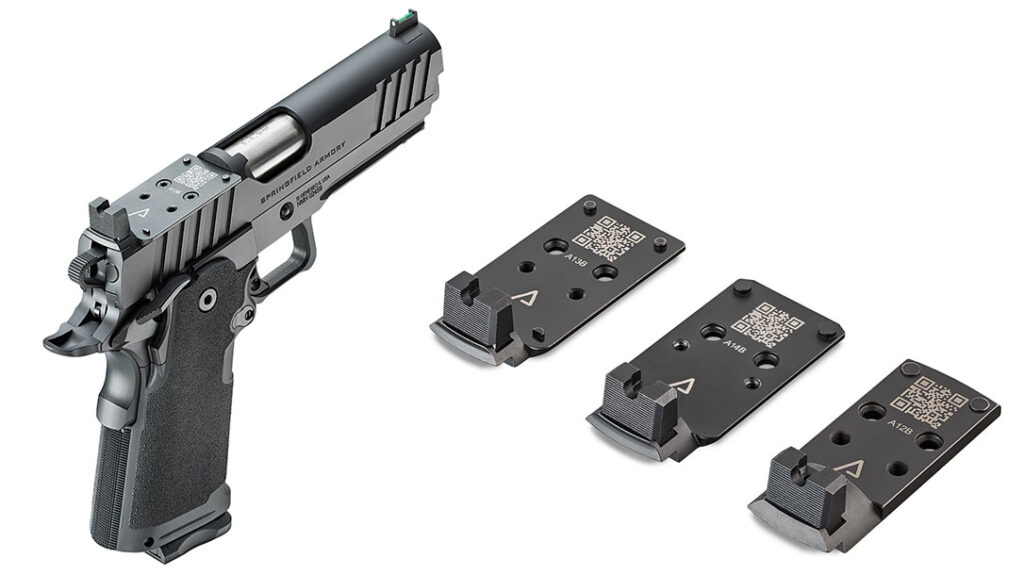
To save me the extra time and effort, the company shipped out a Prodigy with one of its own Hex Dragonfly red-dot sights. So, I could hit the ground running with it right out of the box.
Advertisement — Continue Reading Below
For those that prefer iron sights, the Prodigy ships with a fiber-optic front sight and a serrated, blacked-out rear sight. Correspondingly, the rear sight is part of the adapter plate.
It isn’t a bad combination. But I’ll be honest, I prefer the U-Dot sight arrangement on the Emissary that has the high-visibility front sight. Springfield really spoiled me for all other sights with that particular package.
The Prodigy is adorned with rakishly attractive and quite aggressive slide serrations at the front and the rear of the slide for easy manipulation. The front serrations are just above the “DS” engraving on the slide, which stands for “Double Stack.”
Advertisement — Continue Reading Below
Of course, the Prodigy is also outfitted with an accessory rail for mounting a weapon light to augment the iron sights or red-dot sight. With the integral mounting solutions accounted for, the entire package—including the carbon-steel slide and subframe—is finished with a sleek and sexy black Cerakote finish for a clean and well-polished appearance.
The Prodigy in Hand
Just as much attention was paid to the polymer grip frame and the various controls. The grip fills the hand nicely. Likewise, it is completely suffused with what feels like Springfield’s adaptive grip texture that’s found on the Hellcat pistols.
That texturing feels fantastic. It helps lock in the shooter’s hand effectively without being too aggressive and without irritating the hands. A bit of that same texturing is also found on the face of the vertical triggerguard post. This helps lock in the weak hand for extra support for those who like to use it.
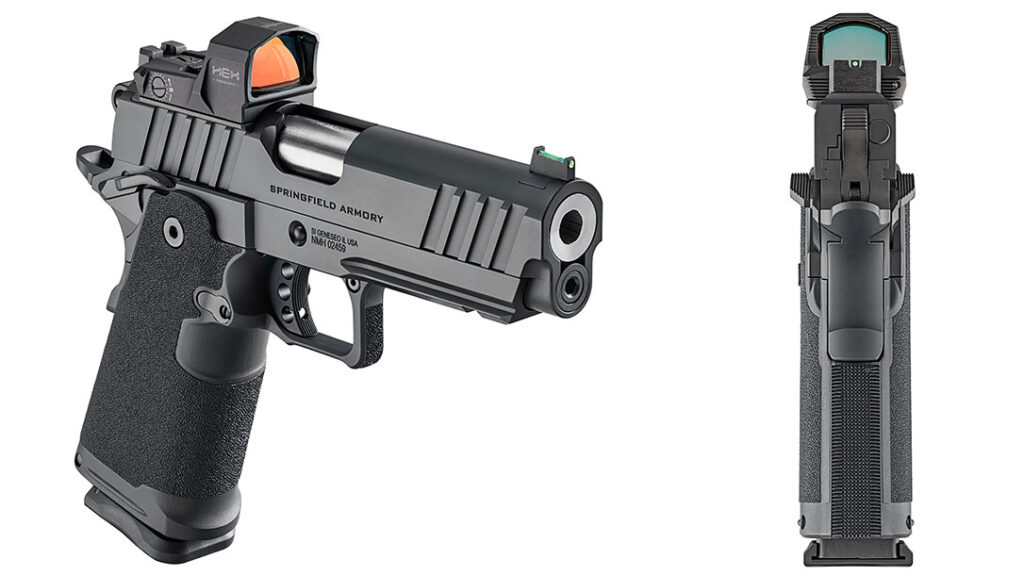
The controls like the ambi thumb safety and the magazine release are perfectly sized and facilitate quick and positive engagement. The mag release has a bit of height to it for easier access. Likewise, the thumb safety had a very snappy and extra-positive action. It was easy to reach to flip on and off, but it also had a positive indent. This allowed it to stay in its assigned position.
The only complaint is that the slide stop/release is tucked down below the lip of the grip frame. Specifically because of the way the grip frame mates up with the steel subframe. This makes it a little tricky to access, especially when you consider the extra girth of the double-stack grip.
I guess that’s just the nature of the beast, and there’s not a lot that can be done to change it. But it does have the advantage of not being easy to accidentally ride the slide stop while shooting. So, we can chalk that up as a positive aspect of the design.
Range Workout
As good as the Prodigy looked and felt, I really wanted it to do well at the range during testing with a couple of other shooting buddies in tow. I needn’t have worried because the Prodigy lived up to all of my expectations.
Between shooting drills on paper, popping steel targets, and testing accuracy from the bench, we shot eight different brands/types of ammunition without any failures of any sort. That included ball ammo, truncated range rounds, and hollow points of various designs, including a couple of polymer-tipped loads.
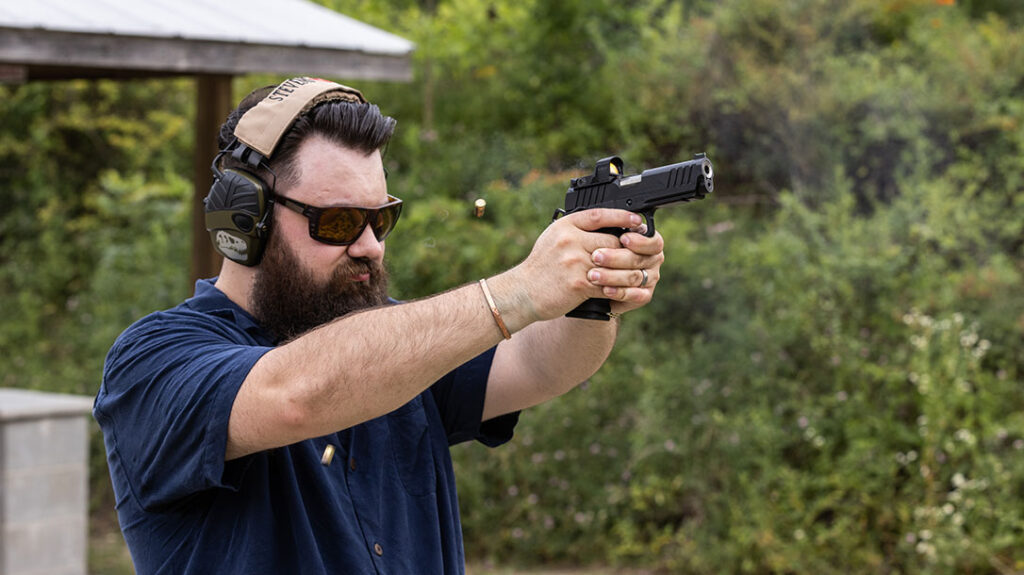
Accuracy was just as good, if not better. We typically test from the bench at 15 yards for pistols with barrels shorter than 4.5 inches. But I was feeling froggy with the Dragonfly installed. Red dots make it much easier for me to shoot accurately, so I took the targets out to 25 yards.
With three different test loads of varying weights, the average for all groups was 1.86 inches. This is pretty damn good for a production pistol. One load I’m really starting to like is Federal’s 135-grain Hydra Shok Deep. It had the best group average at 1.21 inches, with a single best group of 1.06 inches.
Aside from the match-grade barrel, part of that accuracy came from the very nice trigger pull and break. After about an eighth-inch of pre-travel, the trigger on my sample pistol broke at an average of 4.35 pounds, according to my Wheeler Engineering digital trigger gauge.
That’s certainly not the lightest pull on a 2011, or a 1911, for that matter. But it’s a pretty good compromise for an SAO pistol that will be carried for defensive use.
Shooting the Springfield Prodigy
As far as the actual shooting experience itself, the Prodigy was all aces in that regard. The recoil impulse was very soft even with a couple of +P loads we ran through it. There was also very little muzzle flip, thanks to the Prodigy’s size and heft. Not to mention the very tacky grip texturing that facilitated excellent control during recoil.
I also liked the extra real estate on the double-stack grip because it offered additional room to get more meat from my support hand onto the grip surface for a stronger and steadier hold.
The guys from my local FFL were very impressed as well. One of them, Brad, said he really liked the rhythm of the recoil impulse. He thought the Prodigy was very easy to shoot fast and well. At the time, we didn’t know the price of the Prodigy. But he said if Springfield kept it under $2K, it would be an absolute home run.
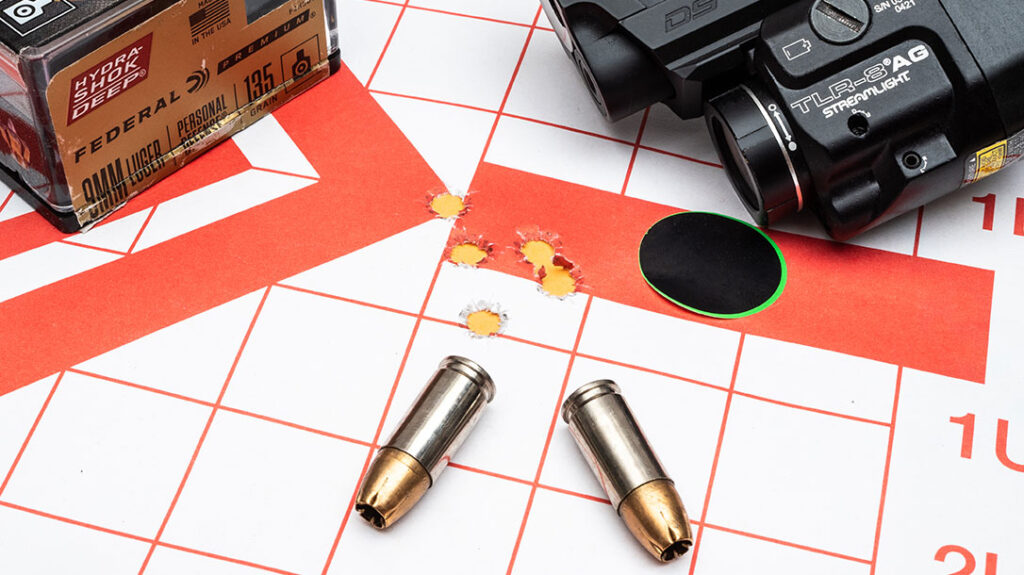
New Kid in Town
Overall, the Prodigy has the look and feel of a tricked-out, high-end fighting pistol, and performed like one as well. About a week after I received the Prodigy, I finally got a spec sheet that had the MSRP (sans Dragonfly) at $1,500. I gotta say that my jaw dropped a good bit.
As much as I really dug the Prodigy when I first received it and had a couple of range sessions with it, once I finally saw the price, I was just that much more impressed.
For a 2011-style pistol, it checks all the boxes with its capacity and its various amenities. And it offers serious competition to other 2011 models on the market. When you consider that some models start at the $2,500 price point and go higher, the Prodigy is going to be a very attractive option to those that are wanting a quality, high-end 2011 without the top-tier price.
I’ve got a feeling Springfield is going to be carving out some new territory for itself with this pistol.
A prodigy is anyone or anything that causes wonder and amazement. Springfield wasn’t too far off the bullseye when the folks there came up with that name for their vision of a 2011-style pistol.
It’s a particularly apt description when you consider its suite of features and level of performance. Especially at a street price well under $1,500.
If you’re looking for a 2011, the Springfield Armory Prodigy should be at the top of your list for consideration.
For more information, please visit Springfield-Armory.com.
Springfield Armory 1911 DS Prodigy Specs
| Caliber | 9mm |
| Barrel | 4.25 inches |
| Overall Length | 7.8 inches |
| Weight | 32.5 ounces (empty) |
| Grips | Polymer |
| Sights | Fiber-optic front, serrated rear |
| Action | SAO |
| Finish | Black Cerakote |
| Capacity | 17+1, 20+1, 26+1 |
| MSRP | $1,500 |
Performance
| Load | VELOCITY | ACCURACY |
| Federal 124 +P HST | 1,169 | 1.44 |
| Federal 135 Hydra Shok Deep | 1,045 | 1.06 |
| Hornady 115 Critical Defense | 1,105 | 2.06 |
Bullet weight measured in grains, velocity in feet per second (fps) by chronograph and accuracy in inches for best five-shot groups at 25 yards.
This article was originally published in the Combat Handguns November/December 2022 issue. Subscription is available in print and digital editions at OutdoorGroupStore.com. Or call 1-800-284-5668, or email subscriptions@athlonmediagroup.com.
